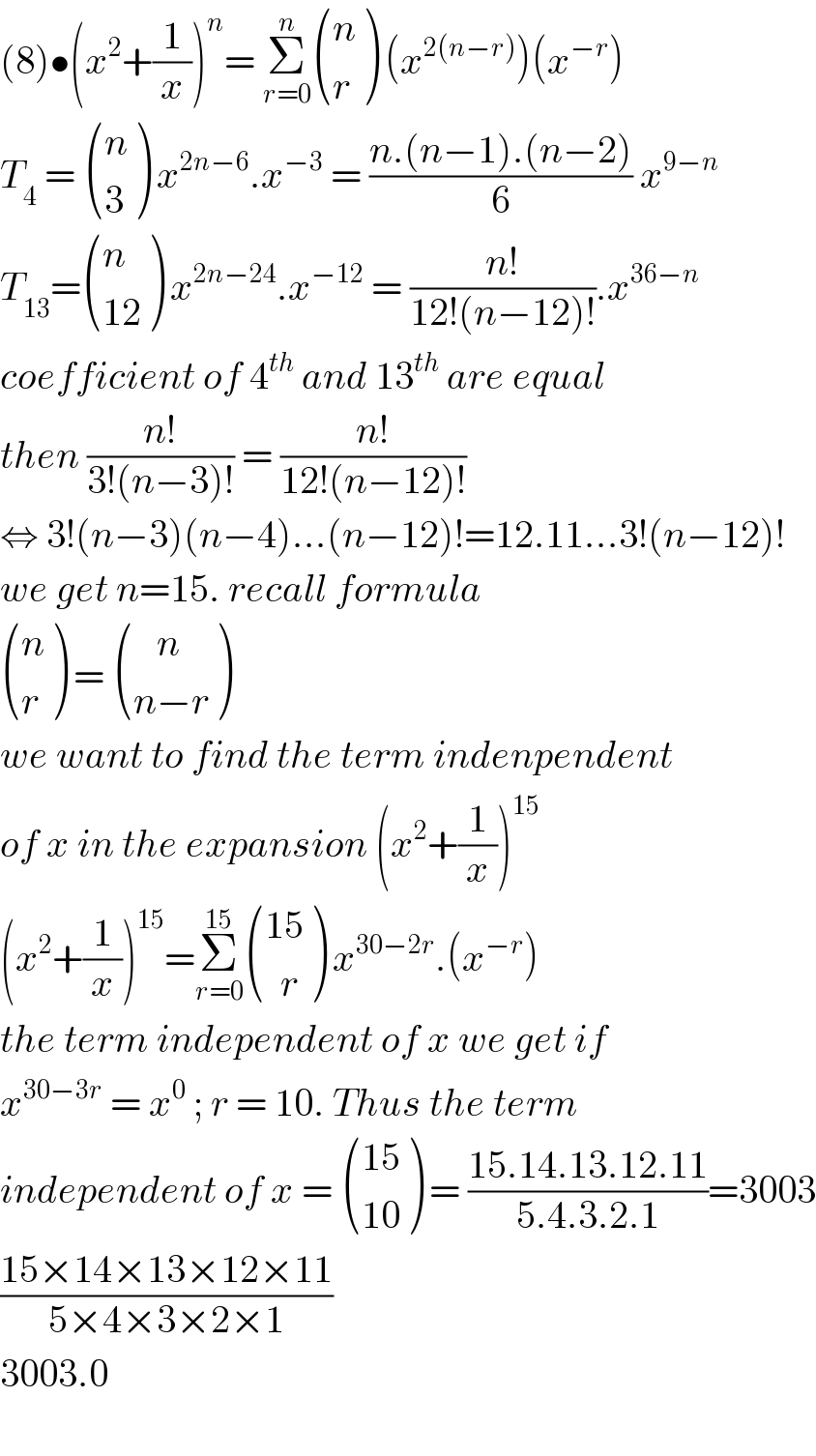
Question and Answers Forum
Question Number 124247 by ZiYangLee last updated on 02/Dec/20

Commented by ZiYangLee last updated on 02/Dec/20

Answered by bramlexs22 last updated on 02/Dec/20

Commented by ZiYangLee last updated on 02/Dec/20

Answered by bramlexs22 last updated on 02/Dec/20

